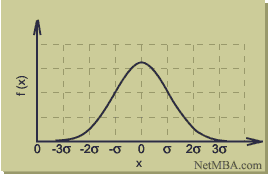ok here is from wikipedia....
The Bell Curve is a controversial, best-selling 1994 book by the late Harvard professor Richard J. Herrnstein and American Enterprise Institute political scientist Charles Murray. Its central point is that intelligence is a better predictor of many factors including financial income, job performance, unwed pregnancy, and crime than parent's socioeconomic status or education level. Also, the book argued that those with high intelligence (the "cognitive elite") are becoming separated from the general population of those with average and below-average intelligence, and that this was a dangerous social trend. Much of the controversy concerned Chapters 13 and 14, in which the authors wrote about the enduring differences in race and intelligence and discuss implications of that difference. The authors were reported throughout the popular press as arguing that these IQ differences are genetic, although they state no position on the issue in the book, and write in the introduction to Chapter 13 that "The debate about whether and how much genes and environment have to do with ethnic differences remains unresolved."
The conclusions made in the book are deduced from the research of others. Richard Herrnstein had a strong background in psychology. Co-author Charles Murray was not an expert in intelligence testing.[1]
The book's title comes from the bell-shaped normal distribution of IQ scores. The Normal distribution is the limiting distribution of a random quantity which is the sum of smaller, independent random phenomena. The message in the title is that IQ scores are normally distributed because a person's intelligence is the sum of many small random variations in genetic and environmental factors.
Shortly after publication, many people rallied both in criticism and defense of the book. Some critics denounced the book and its authors as supporting scientific racism. A number of critical texts, including The Bell Curve Debate, were written in response to the book.
and from another website
The Normal Distribution
(Bell Curve)
In many natural processes, random variation conforms to a particular probability distribution known as the normal distribution, which is the most commonly observed probability distribution. Mathematicians de Moivre and Laplace used this distribution in the 1700's. In the early 1800's, German mathematician and physicist Karl Gauss used it to analyze astronomical data, and it consequently became known as the Gaussian distribution among the scientific community.
The shape of the normal distribution resembles that of a bell, so it sometimes is referred to as the "bell curve", an example of which follows:
Normal Distribution

and the funny thing is bell curve also known as normal distribution...wtf on earth normal distribution..!!!

No comments:
Post a Comment